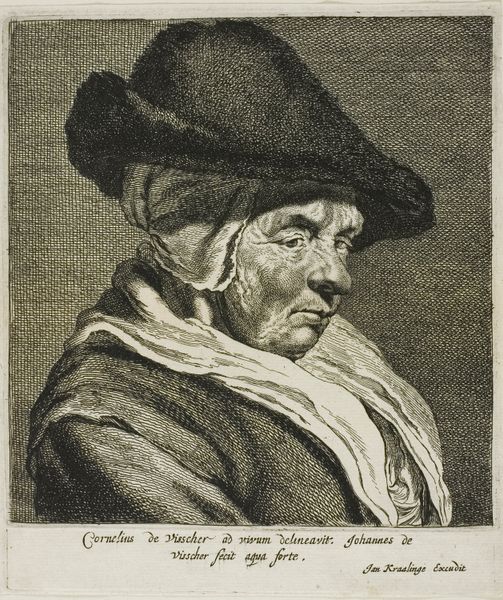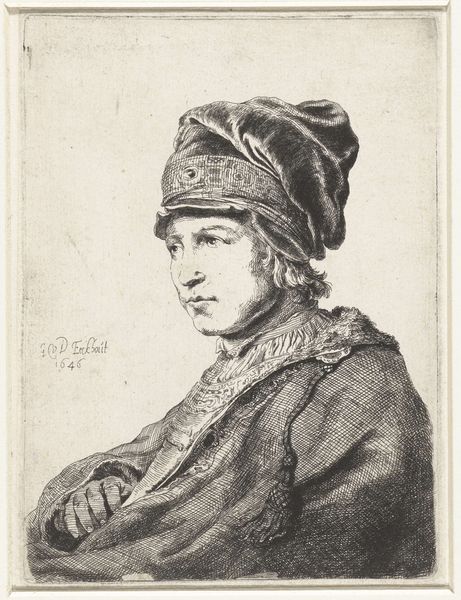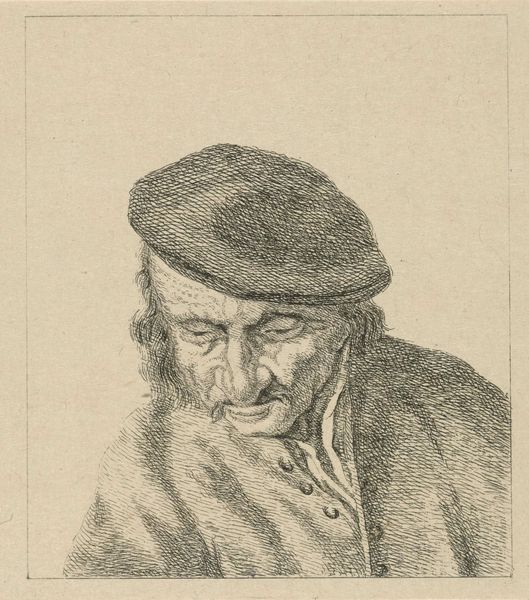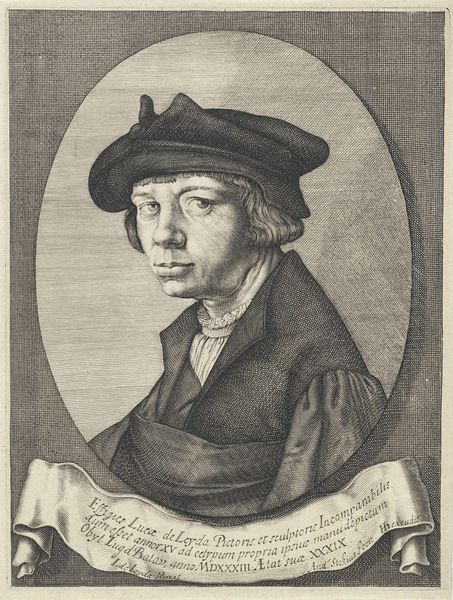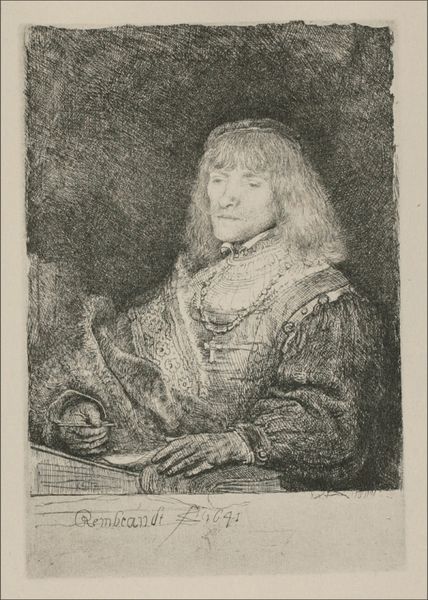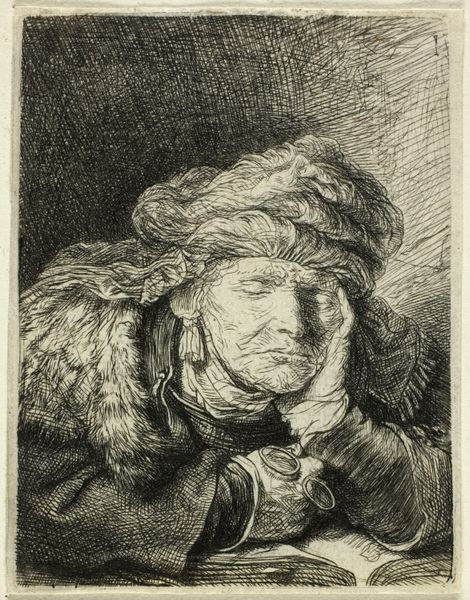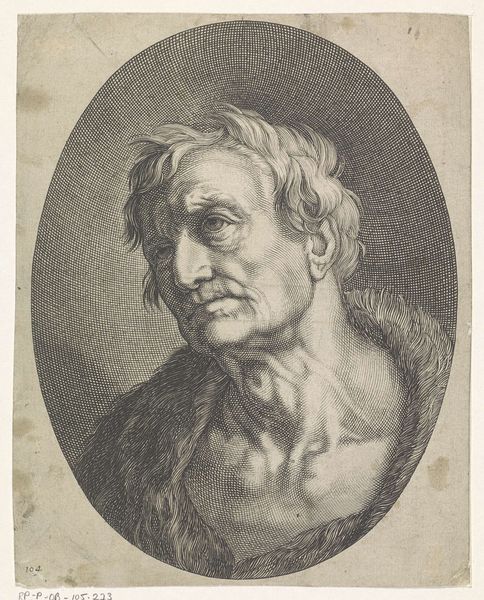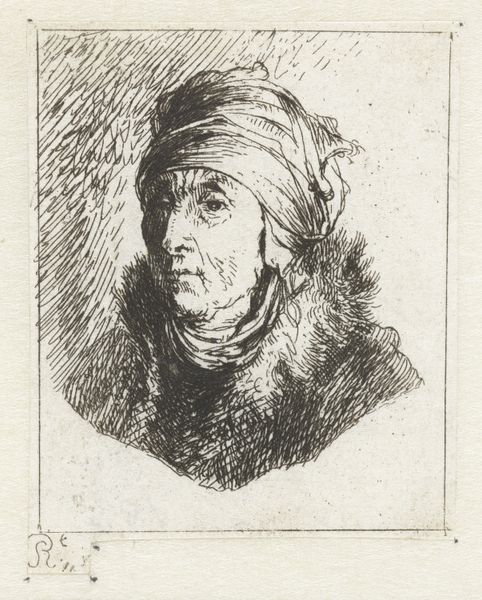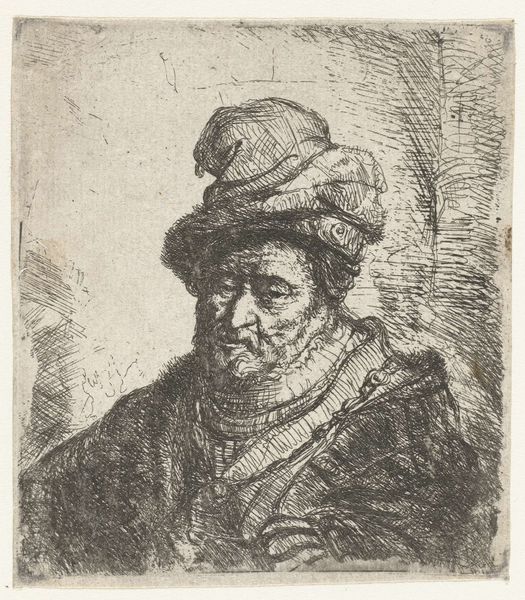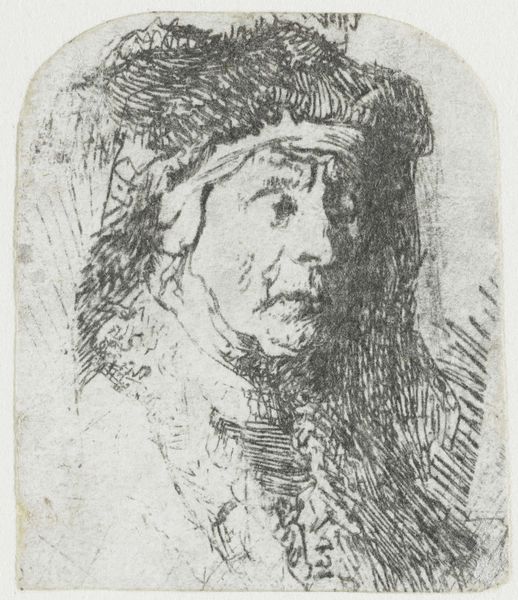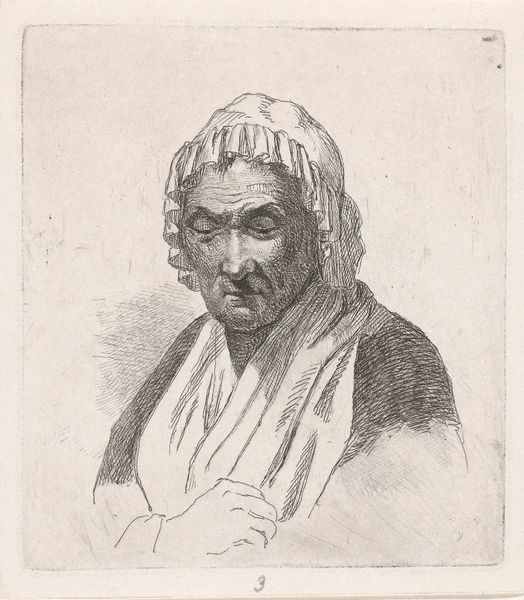
Head of an Old Woman (so-called portrait of Visscher's mother) c. 1649s
0:00
0:00
drawing, print, etching, paper, engraving
#
portrait
#
drawing
#
self-portrait
#
baroque
#
dutch-golden-age
# print
#
etching
#
paper
#
portrait drawing
#
engraving
Dimensions: 141x87 mm (sheet; trimmed)
Copyright: Public Domain
Editor: This is Cornelis Visscher's "Head of an Old Woman," also known as a portrait of his mother, from around the 1640s. It's an etching or engraving. It has a kind of quiet dignity, but also a sense of hardship etched into the face. How do you read this work? Curator: That hardship speaks volumes, doesn't it? But let's delve deeper than initial impressions. Considering the socio-political landscape of 17th-century Netherlands, particularly its burgeoning merchant class, how might we interpret this portrayal of aging and perhaps, the labor she embodied? The face appears burdened. Does it conform to or subvert the expectations of the time for representing women, particularly older women, in portraiture? Editor: That's a really interesting way to frame it! I guess I hadn't thought about the power dynamics at play. The artist chose to focus on aging in a society preoccupied with wealth and maybe even beauty. Curator: Exactly! It prompts questions about visibility and representation. Whose stories are deemed worthy of documentation and display? Think about the intersectionality of age, gender, and class. This woman is presented with detail; do you believe it reflects genuine empathy or something more calculated? And does it give the sitter a degree of agency that was unusual for that time? Editor: That's a tough question. The details definitely suggest intimacy and familiarity, maybe even respect. Is there a hint of challenge in how Visscher invites us to consider this sitter's place in the Dutch Golden Age? Curator: Precisely! Art isn't created in a vacuum. By examining these works through an intersectional lens, we begin to realize more about what the portrait tries to accomplish and reveal unspoken assumptions. Editor: That makes me see this portrait in a completely new light! Thanks!
Comments
No comments
Be the first to comment and join the conversation on the ultimate creative platform.

